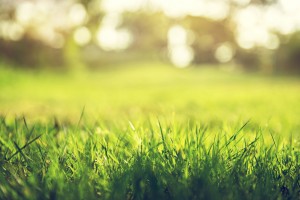 Is your lawn looking bad despite careful watering and mowing? Maybe it needs to be fertilized. Fertilizer application can boost grass growth and help your lawn survive summer heat when applied correctly. However, done haphazardly, the application can do more harm than good, resulting in burnt, brown patches. Here’s how you can feed your lawn effectively to keep it growing all summer.
Is your lawn looking bad despite careful watering and mowing? Maybe it needs to be fertilized. Fertilizer application can boost grass growth and help your lawn survive summer heat when applied correctly. However, done haphazardly, the application can do more harm than good, resulting in burnt, brown patches. Here’s how you can feed your lawn effectively to keep it growing all summer.
When Should I Fertilize My Lawn?
Your first application should be in late spring and early summer. After that, the next application depends on your local weather conditions and the type of grass you’re growing.
If you live in the far north or at a high altitude where temperatures rarely go above 80°F, you can fertilize your lawn at any time in the summer. Otherwise, you shouldn’t fertilize within 30 days of peak summer temperatures. High heat stresses grass, making it easier to burn.
Longer growing seasons in the southern U.S. require more nutrients to keep plants fueled. If your lawn is in poor shape despite proper mowing and watering practices, you may need to apply another application of fertilizer in the late summer. As a general rule, apply fertilizer every 6-8 weeks of active growth. For most lawns, that means applying in April or May, then June or July and finally in late August or early September.
Lawns struggle once temperatures reach the 80s, with cool-season grasses fading first, followed by warm season grasses. When this happens, the leaves will turn brown, but the root system is still active. When this happens, it’s best to leave your lawn alone. The grass is more susceptible to fertilizer burn, and it will deplete nutrients quickly if it’s brought out of hibernation with watering. Cool season grasses should not be fertilized until October or November when they spring back to life.
Which Fertilizer Should I Use?
Fertilizer contains salts that can dry out foliage, hampering growth and turning grass brown. Unlike hibernating grass, burnt grass will be dry and browning will start at the tips.
The faster the fertilizer acts, the more likely it will cause fertilizer burn. Organic fertilizers release nutrients slower than inorganic fertilizer, making it less likely to cause burn. Compost is even slower, but it should only be used in the summer for ground cover after aeration. Both options are pricey, but you can get similar results with controlled release and time released inorganic fertilizers.
For the best results, get a soil test a couple weeks before fertilizing so you can see exactly what your lawn needs. If you don’t have time for a test, go for a balanced mix, like 10-10-10.
Tips for Application
If your lawn has compacted soil, aerate it before applying fertilizer. The holes left behind help water and lawn chemicals penetrate the soil.
Water the ground one or two days before fertilizer application, then the day following application. This helps the fertilizer absorb into the soil, and washes off any fertilizer that landed on the grass blades.
If you’re using your Billy Goat overseeder to drop pelletized fertilizer, set the hopper to half the recommended drop rate. Go over your lawn with one pass, then again at a 90-degree angle. This gets the evenest spread, reducing the chance of over or under-fertilizing.
Grass clippings are a valuable source of nutrients, they boost thatch digestion, and they help shield grass from the heat. If you switch from bagging to mulching clippings, you should be able to reduce fertilizer use by 1/3.
Keep Your Equipment Ready for Summer
If you have a Billy Goat overseeder, dethatcher, aerator or anything else from their lineup, you can get the parts you need for it at www.billygoatparts.com. Billy Goat Parts gives you several ways to find the right part for your machine: type in the part number, check out our sections for popular parts or use our search engine to match up parts to your equipment. We can ship whatever you need for your Billy Goat or its engine to any location in the U.S. or Canada.
